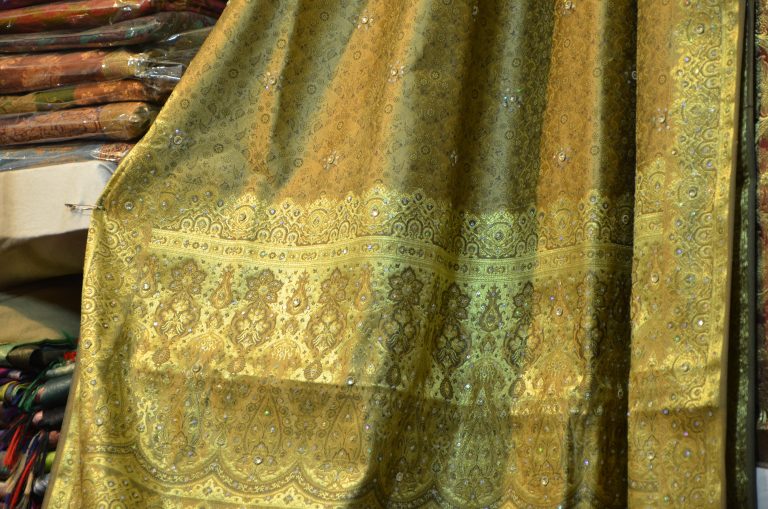India’s diverse and vibrant lifestyle is a reflection of its rich cultural heritage, with each region offering unique traditions and practices. In the city of Varanasi, the ancient art of silk weaving has been a way of life for generations. This article delves into the specific lifestyle of Varanasi’s silk weavers, providing a glimpse into their world of craftsmanship, traditions, and the timeless allure of silk.

Source: https://en.wikipedia.org/wiki/Silk_weaving_in_Varanasi / Ekabhishek
Varanasi: The Silk Weaving Hub:
Varanasi, often referred to as Banaras, is renowned for its centuries-old silk weaving industry. Situated on the banks of the sacred Ganges River, this ancient city has been a center for exquisite silk fabric production for over 500 years.
The Weaving Tradition:
Silk weaving is more than just an occupation in Varanasi; it is a way of life deeply rooted in tradition and culture. Skilled artisans, known as weavers or “bunkars,” meticulously craft silk fabrics using techniques passed down through generations.
The Silk Varieties:
Varanasi is celebrated for its wide range of silk varieties, the most famous being Banarasi silk. Each variety is characterized by distinct weaving patterns, designs, and motifs, making them highly sought after for special occasions and bridal attire.
The Handloom Process:
The entire silk weaving process in Varanasi is manual and labor-intensive. From dyeing the silk threads to setting up the looms and weaving intricate patterns, every step is carried out with precision and care.
Design and Patterns:
The designs adorning Banarasi silk are inspired by Mughal art, nature, and traditional Indian motifs. Popular patterns include the “paisley,” “buta,” and “jhallar,” each telling a story through its intricate details.
Cultural Significance:
Silk weaving in Varanasi is deeply intertwined with cultural and religious events. Silk sarees and fabrics play a central role in traditional ceremonies, making them an integral part of the cultural fabric of the region.
Artisan Communities:
Varanasi is home to several artisan communities, each specializing in a particular aspect of silk weaving, such as design, dyeing, or hand-embroidery. These communities work in harmony, contributing to the creation of exquisite silk textiles.
Challenges and Resilience:
While the silk weaving tradition in Varanasi faces challenges like competition from power looms and fluctuations in demand, the weavers exhibit remarkable resilience. They continue to preserve their craft, adapting to changing times while upholding their cultural heritage.
Global Appeal:
Banarasi silk, with its timeless elegance, has gained global recognition and is cherished by fashion enthusiasts worldwide. Its popularity extends beyond India’s borders, making it a symbol of India’s rich textile heritage.
The lifestyle of Varanasi’s silk weavers is a testament to the enduring beauty of traditional craftsmanship. It offers a window into a world where each thread woven tells a story, and each fabric created is a work of art. As the weavers of Varanasi continue to weave together the past and the present, they ensure that the legacy of Banarasi silk lives on, enriching India’s cultural tapestry and captivating the world with its timeless allure.

